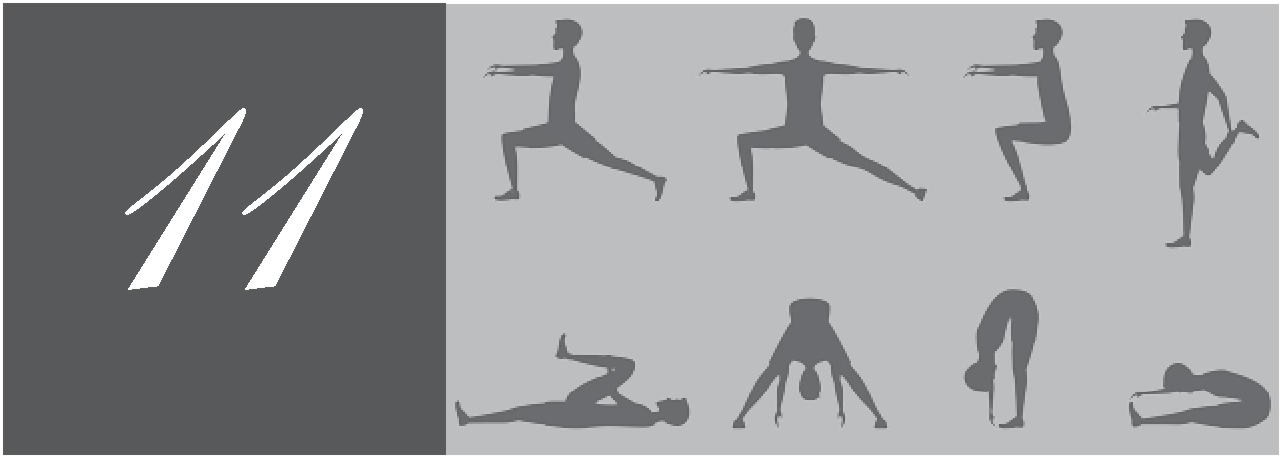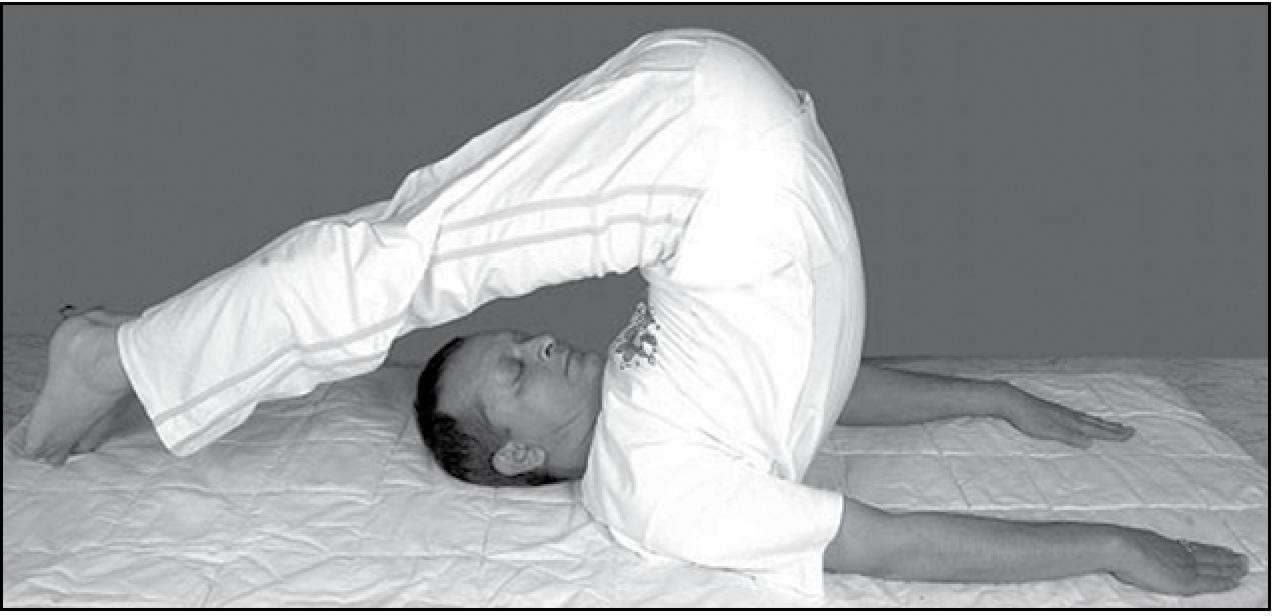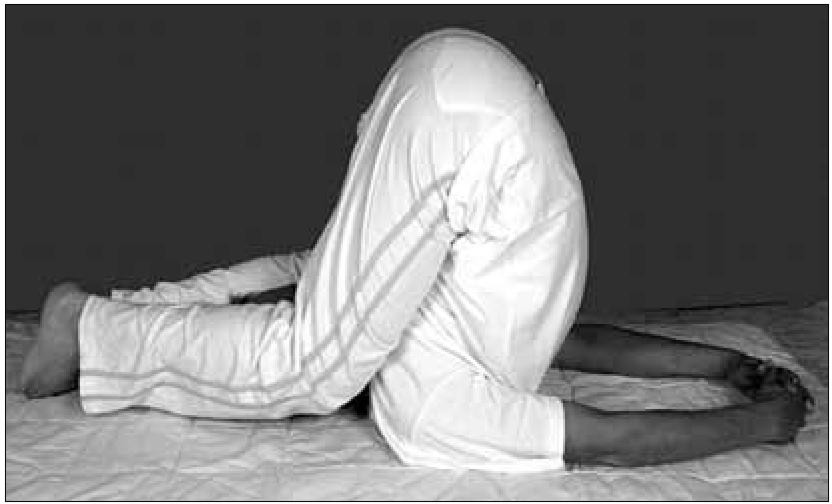
As the name suggests asana resembles a farmer's plough hence it is called Halasana. Yogacharyas have acknowledged Halasana as a part of the Sarvangasan series. After Sarvangasan, if legs are lowered, taken over head and positioned behind it then it is Halasana.

Halasana
Method
Lie down straight on your back. Keep both legs stretched out and close to each other. Place hands parallel to the body. Place your palms facing floor and close to your body.
- Slowly breathing in, without folding knees; raise your legs up to 90 degree. Exhale.
- Breathing out slowly take both legs over head and place them behind it. Toes should touch ground without bending knees.
- Breathing in slowly, without any jerk, bring shoulders and waist to floor. Legs are still parallel to head. Breathe normally.
- Breathing in again bring legs back to floor without bending knees. Exhale completely and relax.
Note
During practice of this asana if legs are bent at knees and brought down to touch ears the same asana becomes Karnapidasana. This asana is so named because both ears experience a little pain because of the pressure of knees.
Karnapidasana (Ear Pressure Pose)

Karnapidasana (Ear Pressure Pose)
Duration
Initially this asana should be practiced only for half a minute. Carefully extending the duration by a minute a week this asana can be practiced for five minutes. Legs should neither be taken up nor brought down hastily or with a jerk but slowly, maintaining balance and the pace. People suffering from high blood pressure, slip disc and heart problem should avoid this asana.
Precaution
Hypertensive, psychiatric and heart patient should not take up the practice of this asana.
Effect on Health
All asanas are certainly beneficial to the human body, but with Halasana you have a double advantage. One, while performing this asana Sarvangasana is practiced and all its benefits mentioned are achieved. Two, when legs are taken over head and behind it and position of Halasana is attained all its benefits are derived, too. Chest, back, shoulder, legs, buttocks and backbone are influenced the most. As a result blood circulation in the body becomes balanced (sam-samanya). Along with strengthening nerves (snayu) of the body, organs of stomach region and throat become healthier. Tonsils can be cured. Muscles of chest, heart and shoulder are strengthened and asana is supportive in getting rid of the root cause of any unhealthiness in these areas.
Halasana helps to melt the obesity causing unrequired accumulated fat around abdomen and waist.
Practice of Halasana influences the Thyroid Gland to a great extent as a result the gland effectively controls metabolism. With the influence on the throat chakra (vishudi kendra), the equilibrium of the body is maintained. There is a marked development of physical strength, spine and muscles.
Halasana also influences glandular system of the body. The impact of practice of this asana is particularly visible on gonads, thymus, thyroid and Para thyroid glands. The internal organs like kidney, small intestine, stomach, Hyoid bone remain healthy. The thyroid and the pituitary glands, the pancreas and the stomach function properly. This asana helps pineal gland to function at peak efficiency thus relieving a person from emotions of lust and anger. Along with these all benefits of Sarvangasana are also derived by person who practices this asana.
Other Benefits
Practice of this asana effectively massages waist, neck and legs. It also makes spine become flexible and strong, keeping practitioner healthy. Halasana has proved to be an effective weight loss tool. It is also beneficial for diabetics.
 Muni Kishan Lal
Muni Kishan Lal
